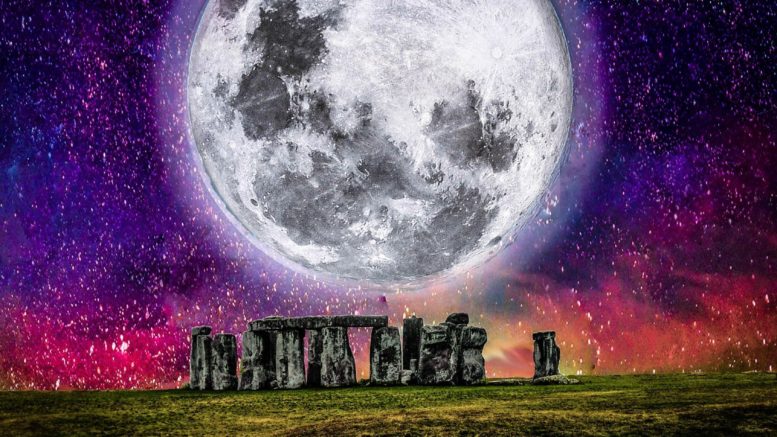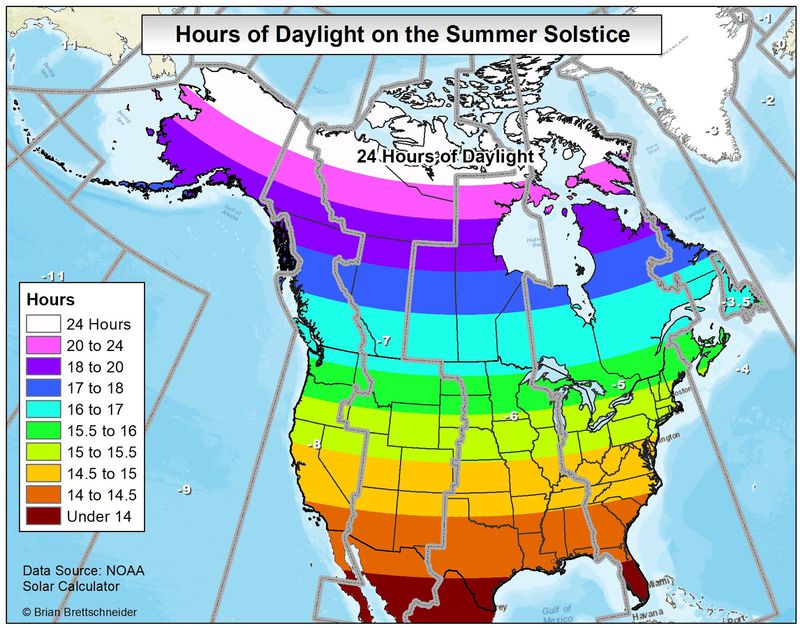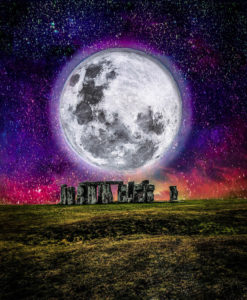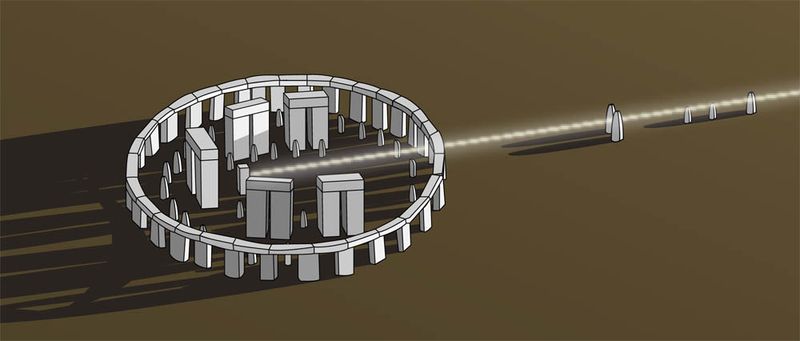Did anyone else notice how light it remained yesterday into the later hours of the evening? If you didn’t you’ll have the chance to witness it again this evening thanks to the annually reoccurring summer solstice!
The summer solstice occurs yearly between the dates of June 20-22 and although the day itself is not actually any longer than 24-hours, due to the Earth’s-tilt the amount of daylight for the northern hemisphere is longer.
While northern demographics witnessed the most daylight, with some regions of Alaska witnessing upwards of a full 24-hour period of full daylight, Pennsylvania received around 15.5-16 hours of daylight yesterday.
Alaska-based climatologist Brian Brettschneider created this hours of daylight graph:
Technically speaking, the summer solstice occurs when the sun is directly overhead the Tropic of Cancer, or 23.5° north latitude. In 2017, this occurred at exactly 12:24 a.m. (Eastern time) on the 21st.
The day is a particularly popular holiday (also known as Litha) among modern day Pagans and Wiccans, who often celebrate it by meditating and spending time outdoors. Last year thousands of Pagans and Wiccans grouped together at Stonehenge to observed the solstice which was also accompanied by a strawberry moon!
The summer and winter solstice have been celebrated for thousands of years, and many researchers and scientists speculate that Stonehenge was built by ancient civilizations specifically to observe the solstices.
Although no one really knows why or how Stonehenge was built over 5,000 years ago, one possibility is that it was used to mark solstices and equinoxes. During the summer solstice the sun rises just over the structure’s Heel Stone and hits the Altar Stone dead center.
The amount of daylight observed after summer solstice will gradually decrease until winter solstice on December 21, the “shortest” day of the year for the northern hemisphere.
Regardless of how to you plan on celebrating (or not celebrating) the solstice, the sun is shining in Ellwood City today and is expected to set at 8:56p.m.









Be the first to comment on "June 21: Longest Day of the Year"